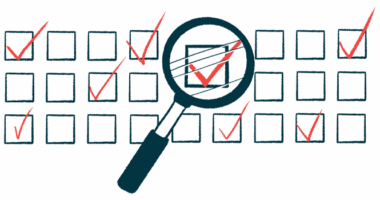Starting the process that’ll lead to me relying on a wheelchair
The emotional, logistical, and financial steps to acquiring this mobility aid

I recently wrote a column detailing my initial thoughts about the latest chapter in my Friedreich’s ataxia (FA) story: the process of accepting that I need to transition to a wheelchair.
This shift is incredibly daunting, not only physically, but emotionally, logistically, and financially. Where do I start?
Since there’s no playbook for this process, I decided that I should address the emotional and logistical sides first and simultaneously, so that’s what I’ve started to do.
The preparation process
I began by acknowledging that a wheelchair was necessary since my need has recently become undeniable. Every time I have a close call, where I lose my balance but don’t fall completely to the ground, my relieved exhale is mixed with thoughts that my luck is running out and that my walking days are numbered. What’s more, when I do fall to the ground and quickly assess that I didn’t sustain serious injuries, I feel that my body is forcing the issue by making me realize that my current accommodations are no longer sufficient.
Second, I spoke my fears out loud. I told my husband that I’d been thinking that the time to begin the wheelchair transition was around the corner. We discussed the internal dialogue I’ve been having. I cried to my friends while we cursed FA and how unfair it is. My physical therapist provided some recommendations of facilities that help with many stages of this transition.
Third, I wrote about it. There’s something so therapeutic about seeing my thoughts in black and white. It helps me look at my reality more objectively, gracefully, hopefully, and with more of a plan. Coherently organizing my thoughts seems to take some power away from my fears. My column on the subject drew comments from people who have experience with this transition, and their encouragement has had such an impact on me.
While my husband and I still haven’t figured out how to talk to our 9-year-old son and 7-year-old daughter about the upcoming changes, we’ve decided that the next step in the process is to begin researching the transition. What changes should be made before I acquire a wheelchair, and what changes can happen more slowly?
I considered the many options for wheelchairs: manual, power, scooter, foldable, all-terrain, and more. To narrow down my searches, I had to have at least a vague idea of what I need. I’m now leaning toward a manual wheelchair that I’ll primarily use at home, a power wheelchair to use when I’m out with other adults who can assist me, and a lightweight, foldable, manual wheelchair for when I’m solo and on the go. I hope my physical therapist’s recommendations can add more clarity to these initial thoughts.
After that logistical planning, I’ll tackle the finances. What will insurance cover, and what will it not? Hopefully, I’ll have an idea of my renovation needs for my equipment, vehicle, and home so that I can estimate my financial investment. From there, I can work on a budget, maybe acquiring loans and so forth.
I didn’t imagine attacking this problem at age 36, but I’ve been mentally preparing for it since my diagnosis in 2013. Ready or not, it’s time. As a song in one of my favorite children’s movie sequels, “Frozen II,” says, “I won’t look too far ahead. It’s too much for me to take. But break it down to this next breath, this next step, this next choice, is one that I can make.”
Here we go.
“I can do all things through Christ who strengthens me.” — Philippians 4:13 (New King James Version)
Note: Friedreich’s Ataxia News is strictly a news and information website about the disease. It does not provide medical advice, diagnosis, or treatment. This content is not intended to be a substitute for professional medical advice, diagnosis, or treatment. Always seek the advice of your physician or another qualified health provider with any questions you may have regarding a medical condition. Never disregard professional medical advice or delay in seeking it because of something you have read on this website. The opinions expressed in this column are not those of Friedreich’s Ataxia News or its parent company, Bionews, and are intended to spark discussion about issues pertaining to Friedreich’s ataxia.








Susan payrovi
Thank you for this honest and beautiful piece about this difficult transition. I admire your resilience so much. Thank you for vulnerably sharing your story.
Terence O'Hanlon
Congratulations Kendall!
Yes it is a huge step but here are two thoughts that might make it a little easier:
1. When you've made the transition you'll realise that it's liberating not constricting. When you're not concentrating on where you'll grab next, you'll be free to appreciate the world around you more.
2. Everyone who loves you, who knows you have FA, is constantly concerned about you falling too. They worry a stranger might bump into you and knock you over. It'll be a huge relief to them (and even to that stranger) too. Few will express it but many will appreciate the signal to take care.
Enjoy!
Martin
Hi Kendall, as always I enjoy your missives, thank you. I concur with Susan and Terence, but having FA myself, is there scope here for perhaps squeezing in one more transition step, ie a walker ? I have 5 and they all meet a slightly different need and although they're possibly the best in class, I look to get stuff on ebay or the likes for a fraction of the price. Just a thought. Good luck, and best foot forward ;-)
Kendall Harvey
Hi Martin! Thank you for the advice and encouragement. I, too, have an arsenal of 5 different walkers. Unfortunately, all of my falls have been while using those walkers.